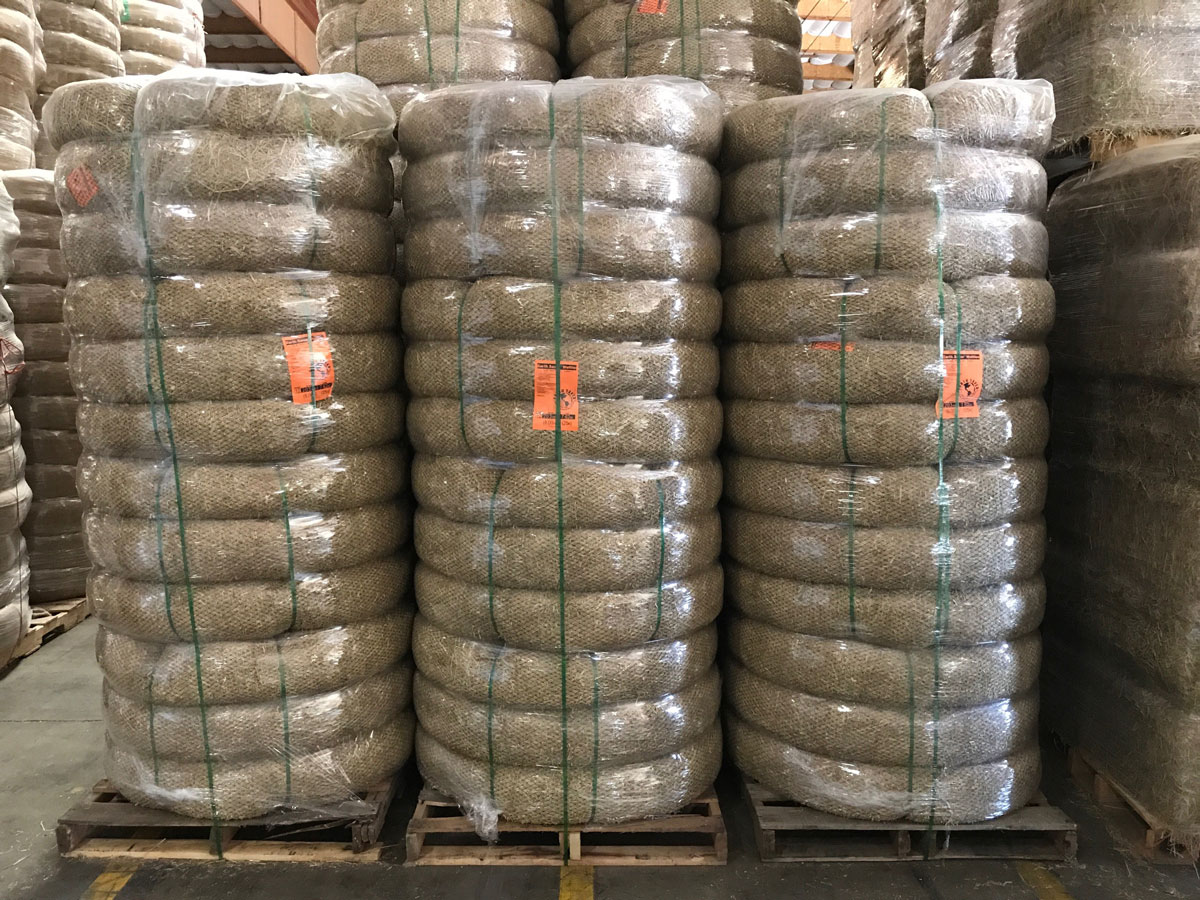 Rice wattles ready to roll
Rice wattles ready to roll
May 28, 2020
ARLINGTON, VA -- Rice straw left on the field after harvest has been developed for a number of novel uses in recent years, from papermaking to biofuel. Repurposing rice straw has the double benefit of clearing the field for the next harvest in an eco-friendly way and putting a vast resource that would otherwise go to waste to good use.
Wattles, also called fiber rolls, are a useful tool to contractors, landscapers, and environmentalists. Natural fibers of various kinds are packed into long tubular rolls and laid out to control sediment and prevent soil erosion. Acting as a kind of filter, wattles can protect water quality, maintain soil integrity, and reduce erosion and sediment runoff on long or steep slopes.
Rice straw is uniquely qualified for this job. It doesn’t contain many weed seeds, like hay bales or wheat straw does, and because rice is an aquatic plant it is more resistant to mold than other straws and breaks down more slowly.
Lynn Friesner, a certified professional in erosion and sediment control (CPESC) with Earthsavers Erosion Control Products, explains that the rice straw used in their wattles is certified weed-free by the California Department of Agriculture.
“Rice straw must be harvested a certain distance away from berms in rice fields, where more weeds tend to grow, in order for the straw to be certified weed-free,” said Friesner. “The nice thing about rice straw is that it naturally doesn’t have many weeds in it, as not a lot of weeds grow in water. Especially when we’re out doing forest work and preserving nature, we don’t want to introduce any invasive weeds.”
Earthsavers, based out of Woodland, California, has been manufacturing rice straw wattles for more than 20 years, working with rice farmers in the Central Valley to collect straw after harvest. Since then, rice straw wattles have become a gold standard for the state.
“A lot of places where we used to see silt fences, we see rice straw wattles now,” Friesner said. “The state of California uses them extensively and they are standard for any project that might affect water quality. We’re using something that would normally be destined for the landfill to protect the land and soil from erosion.”
It’s also a matter of convenience. Unlike other fiber roll filler like coconut husks or wheat hay, rice straw is abundant in California and does not need to be shipped from outside the state, so its carbon footprint is very low.
Friesner says that the widespread adoption of rice straw wattles in California was born largely out of necessity. “In 1991, due to air quality issues, California passed the Rice Straw Burning Reduction Act, and as of 2000 the practice was phased out completely. At the same time, the U.S. Environmental Protection Agency adopted a set of federal requirements for public and private landfills receiving municipal solid waste. So, there was a lot going on for rice farmers simultaneously: they had lots of rice straw to dispose of, and landfill space had just become exponentially more expensive.”
Rice straw wattles were the perfect solution: farmers had a way to dispose of their straw, made a little money selling it to wattle manufacturers, and diverted what Friesner estimates to now be 70,000 tons of straw from landfills every year.
Rice wattles are a popular product at Earthsavers because they hold their form, are firm, have consistent dimensions and density, are relatively easy to handle, and are cost effective. Despite how sturdy they are and how long they last, rice wattles can also be 100 percent biodegradable—Earthsavers offers rice wattles encased in photodegradable plastic or burlap.
The U.S. rice industry is committed to furthering sustainability at every step of the process, and finding an environmentally beneficial use for the straw left over after harvest proves that rice is the crop that keeps on giving.